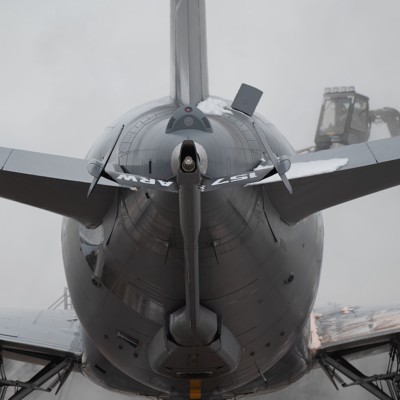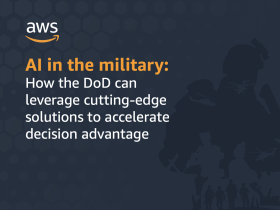The prospect of a fight with China has prompted the U.S. Air Force to change how it buys weapons—driving defense companies to pursue new ways of making money.
The military will need to operate thousands of connected systems across vast distances if war breaks out in the Pacific, which poses new challenges for the Pentagon’s acquisition community, Andrew Hunter, the service’s acquisition chief, said at Defense One’s State of Defense Business event.
“If you think of the typical acquisition approach: cost, schedule, performance; see the fighter, buy the fighter, operate the fighter. This is more complicated than that. It’s about how these things interact together effectively to achieve a warfighting outcome in a particular mission. So we’ve tried to engineer our acquisition tool set, which is not radically different from tools of the past, but to solve this particular problem, which is our pacing challenge,” Hunter said.
To do this, the service is investing in the mission systems of an aircraft or platform first, and building direct relationships with suppliers instead of working through the major defense companies to manage suppliers. This means prime contractors, who have historically profited from controlling the entire architecture, are having to relinquish some control.
The Air Force still needs traditional defense primes to integrate the systems on a platform, Hunter said, but future money will flow to those who have the “best of breed in missions systems,” in addition to integration work.
“Now they’re things that [traditional defense primes] would have thought of as their competitor’s systems, there’s more opportunity for them in that space as well. More competition. And then for the smaller providers, an opportunity to get in the game more easily and to have a direct relationship…with the government, and that is crucial, to have that engagement with the mission system providers as well,” Hunter said.
Hunter pointed to the collaborative combat aircraft program as an example of their new approach to acquisition. The program was set up to allow companies to bid on future tranches if they miss out on the first one, creating a more dynamic relationship with industry.
The service has also learned, through trial and error, that putting all of the risk on industry in the development stage of programs drives companies to ignore potential risks, which can hurt the service down the line, he said.
“Every time we persuade ourselves that, Hey, we found a program [where] the risk is actually so small that we can probably use fixed price contracting here, even during the development phase, we end up finding risks we didn’t appreciate,” Hunter said.
He pointed to two Boeing programs where the service massively underestimated development risks: the T-7 trainer and the KC-46 tanker. Both fixed-price contracts resulted in huge losses for Boeing and delayed capability for the Air Force.
Hunter remained fairly confident that Boeing will be able to turn things around, despite the company’s defense arm bleeding billions and a recently concluded seven-week strike that put near-term deliveries on hold.
“I am confident that Boeing can still deliver quality aircraft. I think the record shows that ‘on time’ has been a bit of a question mark in recent years, and we’d like to see them get back there,” Hunter said.
While Boeing is still behind on a few programs, when they do deliver, they’re “effective combat aircraft,” Hunter said, so the engineering talent is “very much still there.”
The Pentagon needs a healthy industrial base that makes a profit, Hunter said, because without that, companies won’t be able to retain a talented workforce.
“We need the best of the best, because the things that we’re doing are really hard. So it’s in our interest for industry to be profitable within reasonable bounds. And I think by and large, we achieve that, and we need to be careful not to push an industry to a place where they are unprofitable, unattractive to capital, and unattractive to human talent,” he said.
Read the full article here








Leave a Reply